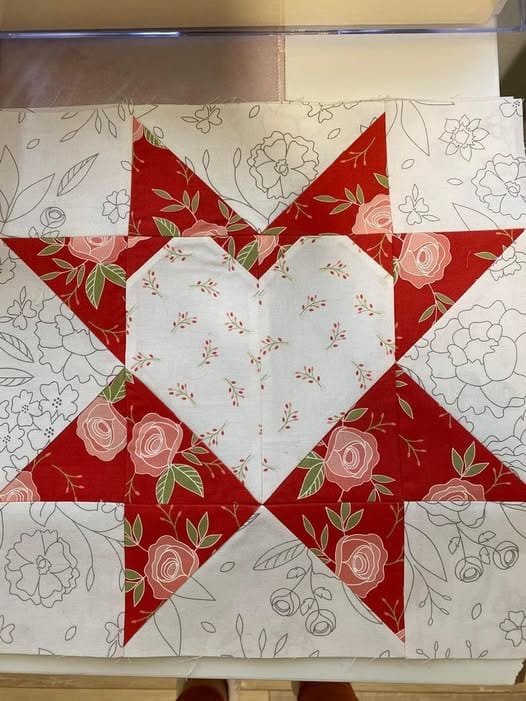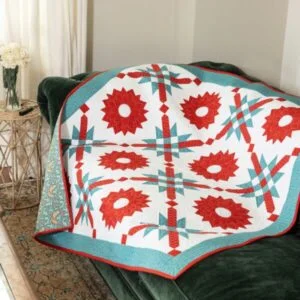The Heart Block Pattern is a timeless design cherished by quilters around the world. Whether you are a beginner exploring patchwork or an experienced crafter seeking inspiration, the Heart Block Pattern offers a perfect blend of simplicity and beauty. This beloved block symbolizes love, warmth, and care, making it ideal for gifts, home decor, or heirloom projects. In this article, we will explore the meaning, creation, variations, and tips related to the Heart Block Pattern, ensuring you feel confident to include this classic design in your next quilt.
When starting with the Heart Block Pattern, quilters often appreciate how easy it is to customize the size and colors of the block. From soft pastels for a baby quilt to vibrant reds for a Valentine’s theme, the versatility of this pattern is remarkable. The Heart Block Pattern allows you to express your creativity while staying true to traditional quilting techniques.
This article will guide you through everything you need to know about the Heart Block Pattern. We will cover how to make it, its historical significance, styling ideas, and practical tips to perfect your blocks. Keep reading to unlock the secrets of making your heart quilt blocks stand out.

The Origins and Significance of the Heart Block Pattern
The Heart Block Pattern has deep roots in quilting history, dating back to the 19th century when quilters used symbolic shapes to tell stories or convey emotions. The heart symbol, representing love and affection, naturally became a favorite among those creating quilts for family members or community gifts. The Heart Block Pattern often appeared in wedding quilts, baby quilts, and memory quilts, each stitch carrying heartfelt intention.
In early American quilting, the Heart Block Pattern was typically hand-pieced using scraps of fabric. Quilters took pride in selecting meaningful fabrics—sometimes repurposing material from clothing or household linens. This made the Heart Block Pattern not only beautiful but deeply personal, as each block could contain a piece of family history.
Today, the Heart Block Pattern continues to be a popular choice because of its emotional resonance. Whether crafted by hand or machine, the block serves as a reminder of the connections between the maker and the recipient. It is this emotional aspect that makes the Heart Block Pattern enduring in the world of quilting.
Modern quilters have adapted the Heart Block Pattern to fit contemporary tastes and techniques. While traditional hearts were often simple, today’s versions may include intricate piecing, appliqué, or even embroidery. The heart motif’s flexibility ensures it remains relevant across generations of quilt makers.
Another reason the Heart Block Pattern holds significance is its universal appeal. Regardless of cultural background, the heart shape is widely recognized and cherished. Incorporating the Heart Block Pattern into a quilt allows the crafter to communicate affection without words, creating a gift that speaks volumes through its design.
Finally, the Heart Block Pattern is often used in charity quilts. Many quilters donate heart-themed quilts to hospitals, shelters, and organizations supporting those in need. The block becomes a symbol of care and solidarity, offering comfort to its recipients.
How to Make a Heart Block Pattern
Creating a Heart Block Pattern is an enjoyable process that allows quilters to experiment with colors, shapes, and techniques. The block typically begins with a square base, onto which the heart shape is formed using triangles and rectangles. This structure makes it ideal for strip piecing or using precut fabrics.
To start, choose two contrasting fabrics—one for the heart and one for the background. This contrast helps the heart shape stand out, highlighting the beauty of the Heart Block Pattern. Cutting accurate pieces is crucial, as precise measurements will ensure the heart comes together neatly.
Sewing the block involves piecing together squares and half-square triangles to form the top curves of the heart. Attention to seam allowance is key when working with the Heart Block Pattern, as even slight misalignments can alter the finished shape. Pressing seams carefully also contributes to a crisp, professional-looking block.
Once the top of the heart is assembled, the bottom portion typically involves joining two triangles or creating a point using folded corners. This step defines the heart’s tip and completes the Heart Block Pattern. Many quilters find joy in seeing the heart take shape as the pieces come together.
For beginners, using a pattern template can help in maintaining accuracy. Templates for the Heart Block Pattern are widely available or can be drawn at home using graph paper. Templates provide clear guidelines, especially when creating multiple blocks for a larger quilt.
As you gain confidence, consider experimenting with variations of the Heart Block Pattern. For example, adding smaller hearts within the larger block or alternating heart blocks with other designs. This customization adds depth and uniqueness to your quilt.
Finally, remember that practice makes perfect. The more you work with the Heart Block Pattern, the more comfortable you will become with its assembly. Each block is a chance to refine your skills and create something beautiful.
Styling and Color Ideas for Heart Block Pattern
One of the joys of the Heart Block Pattern is how easily it adapts to different color schemes. For a classic look, red and white are traditional choices, evoking a timeless, romantic feel. This color pairing is especially popular for Valentine’s Day quilts or anniversary gifts.
If you prefer a modern aesthetic, consider using bold solids or monochromatic palettes. A black and white Heart Block Pattern quilt, for instance, offers a striking, contemporary appearance that fits minimalist decor. Alternatively, try a rainbow of hearts against a neutral background for a playful, vibrant project.
Seasonal quilts are another great way to use the Heart Block Pattern. Soft pastels create a springtime vibe, while rich jewel tones feel warm and cozy for autumn. Fabric choice plays a significant role in setting the mood of your finished quilt.
Scrappy hearts, made from fabric remnants, give the Heart Block Pattern a charming, eclectic look. This is an excellent way to use up leftover fabrics and add personal meaning to each block. No two scrappy heart blocks are exactly the same, making your quilt truly one-of-a-kind.
Consider experimenting with background fabrics as well. A subtle print or textured fabric behind the heart can add dimension without overshadowing the block’s main feature. The Heart Block Pattern shines when supported by thoughtful fabric selection.
Finally, embellishments such as embroidery, beads, or quilting stitches within the heart shape can add a touch of artistry. These extra details personalize the Heart Block Pattern, turning a simple block into a miniature work of art.
Tips for Perfecting Your Heart Block Pattern
Achieving crisp points and smooth curves is one of the main goals when working with the Heart Block Pattern. Careful cutting and sewing make all the difference. Always use a sharp rotary cutter and measure twice before cutting to ensure precision.
Chain piecing can speed up the process when making multiple blocks. This technique allows you to sew several pieces in succession without stopping to cut threads. It is especially helpful when constructing quilts with repeated Heart Block Pattern elements.
Pressing seams as you go is another tip for a polished look. Use an iron to press each seam flat before adding the next piece. This keeps the block from becoming bulky and helps the Heart Block Pattern lay flat when assembled.
When assembling rows of heart blocks, pay attention to alignment. A design wall or large flat surface can help you arrange blocks before final stitching. This ensures that your Heart Block Pattern quilt top looks cohesive and balanced.
If you encounter difficulties with points not matching perfectly, do not worry. Small imperfections are part of the handmade charm of quilting. Focus on consistency across your blocks rather than stressing over each individual point.
Lastly, enjoy the journey. Quilting is about creativity, expression, and joy. The Heart Block Pattern invites you to share these values, whether you are making a quilt for yourself or as a gift for someone special.
FAQ about Heart Block Pattern
What size is standard for a Heart Block Pattern?
The most common size for a Heart Block Pattern is 12 inches square, but you can easily adjust the size to fit your project.
Is the Heart Block Pattern suitable for beginners?
Yes, the Heart Block Pattern is an excellent choice for beginners because of its straightforward construction and forgiving design.
Can I make the Heart Block Pattern using precut fabrics?
Absolutely! The Heart Block Pattern works well with precuts such as charm packs or layer cakes, making preparation even easier.
What fabrics are best for the Heart Block Pattern?
Cotton fabrics are preferred because they are easy to sew and press, helping achieve crisp lines in the Heart Block Pattern.
Do I need a template to make the Heart Block Pattern?
Templates can be helpful, especially when starting out, but experienced quilters often cut directly using rulers and rotary cutters.
How can I add dimension to the Heart Block Pattern?
Try using textured fabrics, layering colors, or adding quilting details within the heart shape to give your Heart Block Pattern depth.
Conclusion
In this article, we explored the beauty and versatility of the Heart Block Pattern. From its rich history to practical construction tips, styling ideas, and answers to common questions, the Heart Block Pattern proves to be a meaningful addition to any quilt. We hope you feel inspired to create your own heart blocks and share your creations with others. Please leave a sincere opinion or suggestions about this article. Your feedback helps us continue providing valuable and inspiring content for quilters everywhere.



